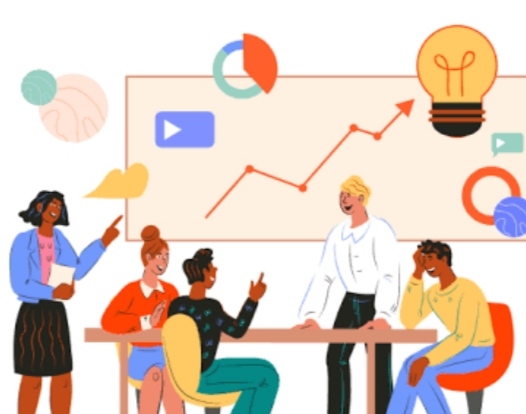Personalized learning centers around the task of connecting a learner’s previous knowledge, experiences, and abilities with training materials that will link that understanding with new information.
The simplest example of personalized learning would be when an instructor provides learning material with proper content and context, and in the best way for the learner.
This is done by using the existing knowledge that the instructor has of the student. The instructor understands how best to connect the learner’s previous experiences and abilities to the new information, building links between existing knowledge and new information.
Proper learning material is content that is relevant to the learner’s previous experiences.
The best way, for each learner, is delivery of information in such a way that the learner is able to acquire the new information easily.
This could be the type of material (video, text, or interactive games, for example), the time spent, the amount of material covered in each session, and the order in which new information is explained. This will vary for each learner, as everyone has different learning styles.
This, of course, is not a scalable solution, but it is the simplest explanation of how personalized learning can be actioned. It is a process of connection, of delivering the right tools to assist the learning path.
Nowadays, to make this type of approach happen, and more importantly, be scalable, organizations need to be able to create a digital learning infrastructure that can automate this process and make it cost-effective.
To do so, organizations need to use a variety of digital solutions. These can include communication channels (e.g. Slack), AI technologies (e.g. machine learning and automation), data analysis, learning platforms, mobile technologies, and more.
Only by creating a system using the many available tools can an organization better understand the needs of each individual learner, and deliver the content that they need, when they need it, in a truly scalable and organized fashion.
Let’s take a look at how this would work in practice. Meet Jeff, your new employee.
You know the following information about Jeff:
He has an engineering degree.
His previous work experience was as a senior engineer at a construction company.
He prefers to consume video content rather than read.
He enjoys using technology, and quite often uses mobile devices in his work.
Some learner profiles will have more variables, but let’s start with this.
So based on those parameters, a learning instructor would create a specific learning path for Jeff. The path that will be based on his education (comfortable with high-level educational content), experience (connecting information to what a senior engineer would know), and preferred content type (video) and will deliver it on the go, so Jeff can engage with content on mobile devices.
So this is how personalized learning looks like and works.




